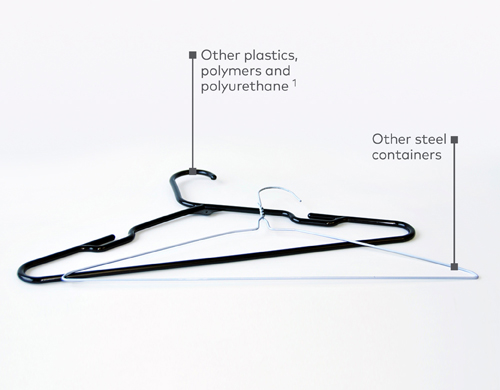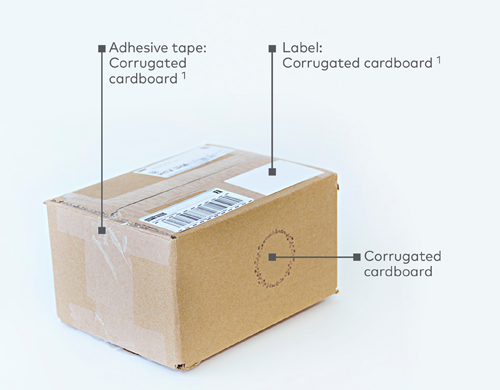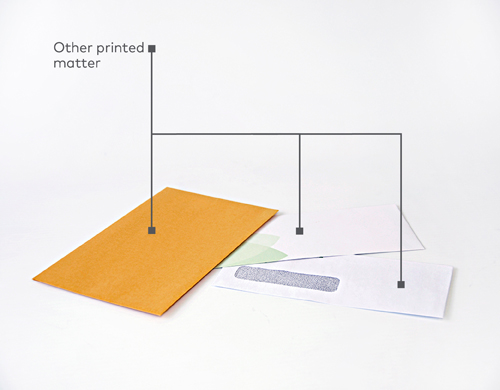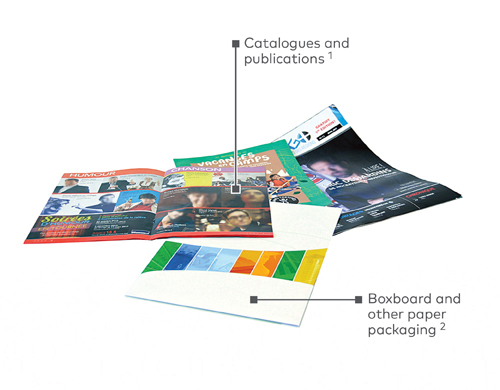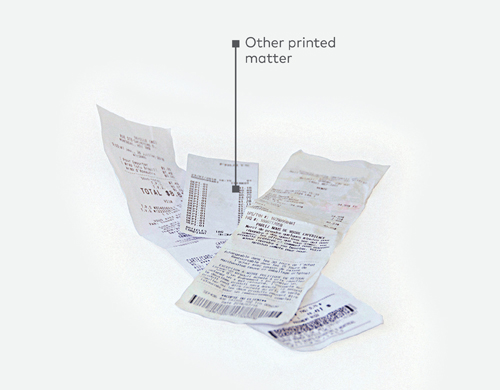Glossary for service company
Before you begin the reporting process, get up to date on key concepts by consulting the glossary for service companies.
First supplier
Domiciled or established in Québec, a first supplier is the first to take title, possession or control of a designated printed matter, a product marketed with a designated container or packaging or a short-life container or packaging sold as a product in Québec.
For example, a retailer that imports or distribute a product whose owner is located in Ontario and does not have a place of business in Québec must report the containers, packaging and printed matter it imports or distribute.
Containers and packaging added at the point of sale
Containers and packaging added at the point of sale include all the containers and packaging provided to a consumer to protect or transport a product (e.g. plastic bag). These containers and packaging are provided to the consumer by the point of sale.
Primary packaging
Primary packaging is the packaging that contains the product being sold. It is therefore in direct contact with the product. For example, the tube that contains toothpaste is primary packaging. Primary packaging must be reported.
Deduction for CP&PM ultimately intended for industrial, commercial and institutional establishments
The containers, packaging and printed matter intended for a final consumer that is an industrial, commercial or institutional establishment are excluded from the calculation to determine the total contribution and therefore do not need to be reported.
Name
A name is the designation under which a company operates as a corporation, a partnership or an individual.
Brand
Generally speaking, a brand is used by a company to set its products and services apart from others (e.g. a trademark). This definition does not include certification marks.
Distinguishing guise
A distinguishing guise is the unique way an organization wraps or packages a product to set itself apart or distinguish a product from others on the market.
Methodology to facilitate the reporting process
It is important to explain the methodology used to collect or estimate your data as part of the reporting process. In this section, you will find everything you need to develop your own work methodology.
Use the dedicated page in the reporting portal to detail your methodology.
Steps
- List all the products sold during the reporting year
- Determine those responsible for each product:
– Include all the containers, packaging and printed matter related to your private brand products and those for which you are the first supplier in Québec
– Identify the components of each product for which you are responsible. For example, in the insurance sector, for an insurance contract sent by mail:
– envelope or plastic film
– insurance contract
- Include the materials added at the point of sale. For example: receipts and invoices, plastic film bags, etc.
- Include all marketing-related printed matter. For example: catalogues, flyers, inserts, guidebooks, etc.
- List all the containers, packaging and printed matter used to fulfill online orders. For example: shipping boxes, padded envelopes, etc.
- List the products distributed free of charge at special and promotional events.
- Indicate the data sources used to complete your report. For example: real unit weight determined manually or provided by the manufacturer, supplier or printer.
Deductions
- Especially for companies in telecommunications, returned merchandise that is:
– recalled
– expired
– damaged and cannot be sold to a consumer
– not distributed
- All containers, packaging and printed matter used or recovered in-house (i.e. copies of contracts signed by clients, forms filled in and returned by clients, etc.), unsold or not distributed.
- Containers and packaging meant for a final consumer that is an industrial, commercial or institutional establishment.
- Books and materials included in the newspaper class. For example: travel book.
Methodology
- Describe your activities and products and list the number of establishments you operate in Québec.
- Mention the changes since the last report.
- Explain any considerable variations between the current quantities you are reporting and those included in the last report.
For example:
– increase or decrease in sales (%)
– launch of new products
– branch openings and closings
– acquisition or sale of brands
– reduction in packaging
– implementation of new measures
Reporting the containers, packaging and printed matter you put on the market in Québec each year can be a time-consuming exercise. But the right tools make it easier!
Examples of designated materials to include in your report
| Insurance / banking | |
|---|---|
| Products: | To be classified in: |
|
Flyers / brochures |
Other printed matter / Catalogues and publications (if bound) |
|
Transaction receipts |
Other printed matter |
|
Insurance contracts |
Other printed matter |
|
Account statements |
Other printed matter |
|
Envelopes and correspondence |
Other printed matter |
|
Promotional material (calendar, notepad, etc.) |
Notepads: Paper for general use |
| Teaching institutions | |
|---|---|
| Products: | To be classified in: |
|
Guides |
Catalogues and publications |
|
Correspondence (invoices, statements of account, letters and envelopes, etc.) / Program brochures |
Other printed matter |
|
Notepads bearing the institution’s crest/image |
Paper for general use |
Examples of containers, packaging and printed matter made up of several materials subject to a fee
Some containers, packaging and printed matter raise a few questions. In what material class should I report the bottlecap, label or lid? A picture is worth a thousand words!
Common errors by service companies
The reports filed by service companies often contain the same errors. Here are some tips and tricks to help you avoid them!
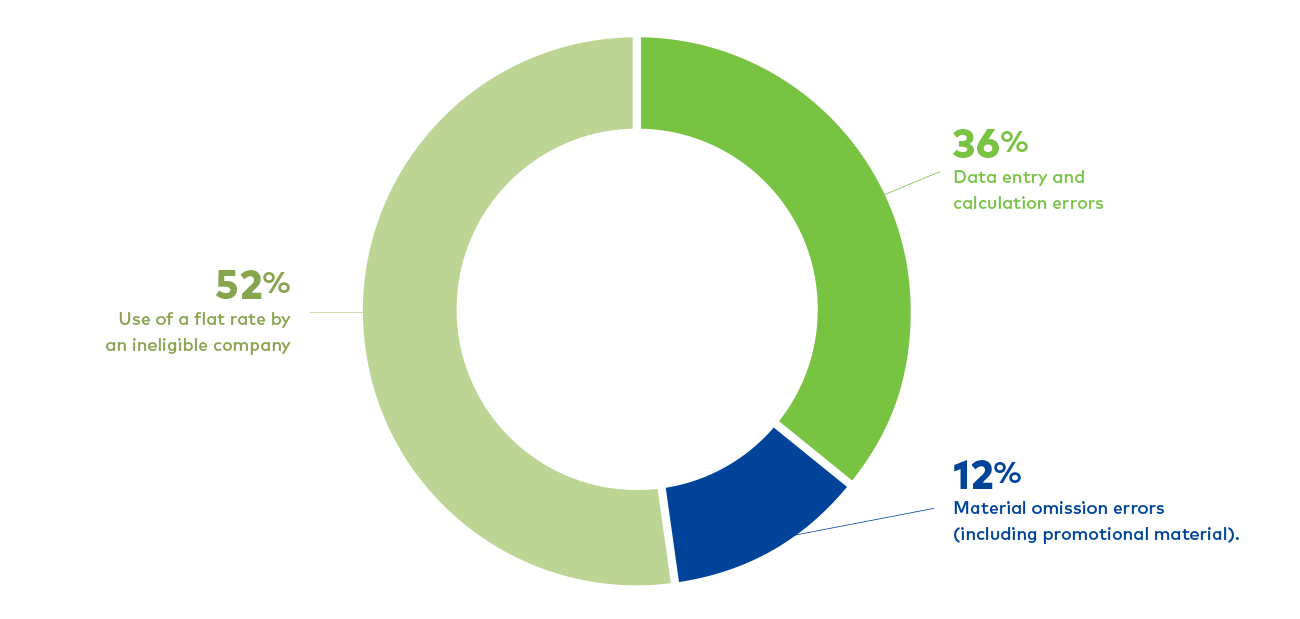
Making keying and calculation errors
| Examples and explanations | Tips |
Entry of incorrect or inexact data or data with the decimal in the wrong position |
For example, if a company sells a pack of 24 bottles of water in a cardboard box ultimately intended for the consumers, it must report the box and 24 times the weight of the plastic bottle. The error is much more common when entering data for boxes of multipacks. For example, when a box contains four packs of six bottles wrapped in plastic, 1 cardboard box (if intended for the consumers), 4 overpack films and 24 bottles must be reported. |
Subtracting ineligible deductions
| Examples and explanations | Tips |
|
|
Not reporting materials from multipack containers and packaging or reporting materials in the wrong category
| Examples and explanations | Tips |
|
|
Not subtracting the paper used in house
| Examples and explanations | Tips |
Because recyclable materials are subject to regulations, some companies wrongly think that the paper they purchase and use in house is subject to a fee. However, only the containers, packaging and printed matter provided to consumers in Québec are subject to a fee. |
Exclude the paper purchased and used within the company when calculating the quantities of materials to be reported. |

